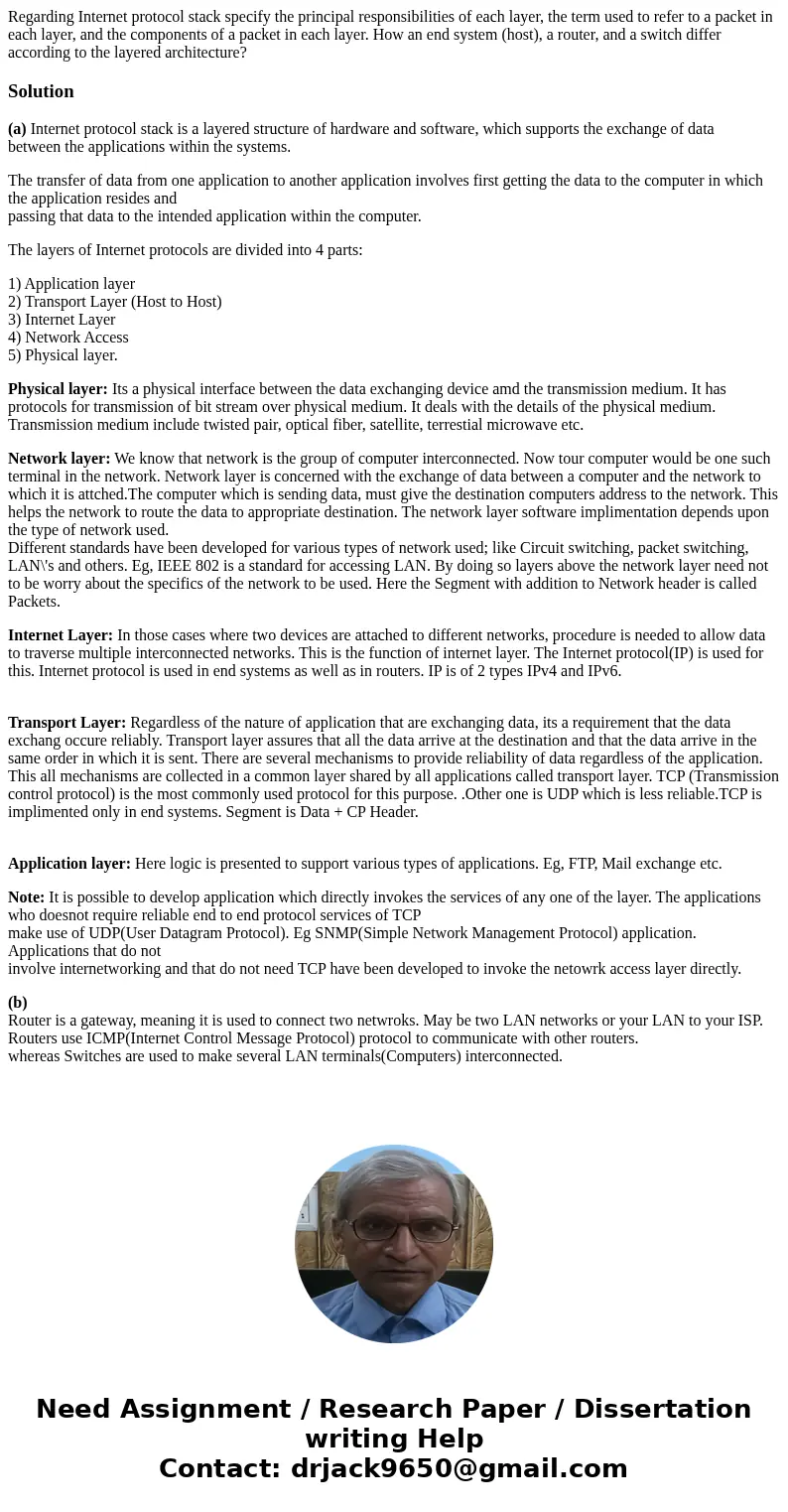Regarding Internet protocol stack specify the principal resp
Solution
(a) Internet protocol stack is a layered structure of hardware and software, which supports the exchange of data
between the applications within the systems.
The transfer of data from one application to another application involves first getting the data to the computer in which the application resides and
passing that data to the intended application within the computer.
The layers of Internet protocols are divided into 4 parts:
1) Application layer
2) Transport Layer (Host to Host)
3) Internet Layer
4) Network Access
5) Physical layer.
Physical layer: Its a physical interface between the data exchanging device amd the transmission medium. It has protocols for transmission of bit stream over physical medium. It deals with the details of the physical medium. Transmission medium include twisted pair, optical fiber, satellite, terrestial microwave etc.
Network layer: We know that network is the group of computer interconnected. Now tour computer would be one such terminal in the network. Network layer is concerned with the exchange of data between a computer and the network to which it is attched.The computer which is sending data, must give the destination computers address to the network. This helps the network to route the data to appropriate destination. The network layer software implimentation depends upon the type of network used.
Different standards have been developed for various types of network used; like Circuit switching, packet switching, LAN\'s and others. Eg, IEEE 802 is a standard for accessing LAN. By doing so layers above the network layer need not to be worry about the specifics of the network to be used. Here the Segment with addition to Network header is called Packets.
Internet Layer: In those cases where two devices are attached to different networks, procedure is needed to allow data to traverse multiple interconnected networks. This is the function of internet layer. The Internet protocol(IP) is used for this. Internet protocol is used in end systems as well as in routers. IP is of 2 types IPv4 and IPv6.
Transport Layer: Regardless of the nature of application that are exchanging data, its a requirement that the data exchang occure reliably. Transport layer assures that all the data arrive at the destination and that the data arrive in the same order in which it is sent. There are several mechanisms to provide reliability of data regardless of the application. This all mechanisms are collected in a common layer shared by all applications called transport layer. TCP (Transmission control protocol) is the most commonly used protocol for this purpose. .Other one is UDP which is less reliable.TCP is implimented only in end systems. Segment is Data + CP Header.
Application layer: Here logic is presented to support various types of applications. Eg, FTP, Mail exchange etc.
Note: It is possible to develop application which directly invokes the services of any one of the layer. The applications who doesnot require reliable end to end protocol services of TCP
make use of UDP(User Datagram Protocol). Eg SNMP(Simple Network Management Protocol) application. Applications that do not
involve internetworking and that do not need TCP have been developed to invoke the netowrk access layer directly.
(b)
Router is a gateway, meaning it is used to connect two netwroks. May be two LAN networks or your LAN to your ISP.
Routers use ICMP(Internet Control Message Protocol) protocol to communicate with other routers.
whereas Switches are used to make several LAN terminals(Computers) interconnected.

 Homework Sourse
Homework Sourse